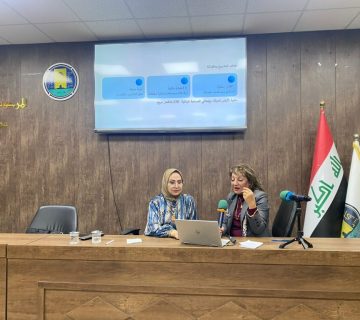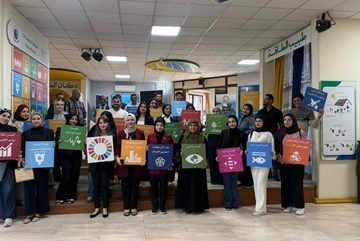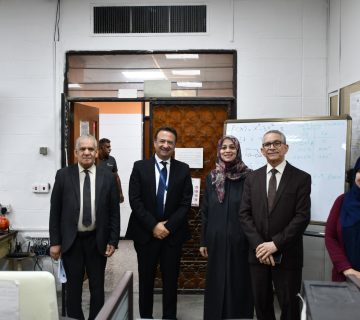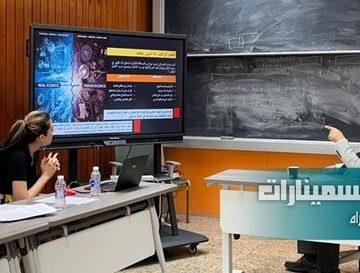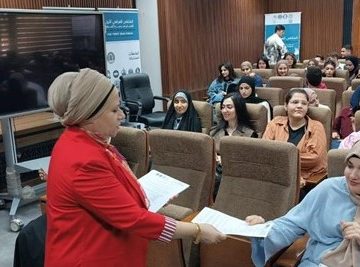Civil Engineering Department
College of Engineering \University of Baghdad, held MSc thesis examination titled
“Some properties of concrete containing polystyrene waste and reinforced with sustainable
plastic fibers”
By student Aya Sabah Salah al Deen and supervised by Prof. Dr.Abdul khadir Ismael , the examination committee consisted of prof.Dr. Nada Mahdi as chairman , and membership of Asst. prof.Hadeel Khalid , prof.Dr.Laith Abdul Bari . After conducting the public discussion and listening to the student’s defense, the thesis was accepted . The thesis was summarized as follow:
Abstract
Concrete is one of the most common building materials used in construction projects all over the world currently. Also, people use a lot of natural resources and produce a lot of industrial waste. Since this waste does not decompose in the short term, burying it harms the environment, but when these residues are added to concrete as a substitute for aggregates, the amount of coarse aggregate and fine aggregate required will decrease and it will save money and make the concrete have better properties. Environmental pollution requires new solutions for sustainable development using friendly construction materials for the environment.
The aim of the research in this study is to create and produce lightweight concrete (LWC) using local waste. Added wastes are present in large quantities in Iraq. EPS balls made of polystyrene have been replaced by coarse aggregates by volume. Waste plastic fibers (WPFs) were also added, which have high tensile strengths, as they were produced from cutting plastic bottles and converting them into fibers and used in different size ratios. To enhance some of the mechanical properties of concrete. The produced concrete was tested for hardness and mechanical properties such as density, compressive strength and flexural strength. Three samples were examined at years 7, 14 and 28 with normal curing at room temperature (20 °C).
In the first step, the coarse aggregate was replaced with different amounts of synthetic EPS (20%, 40%, 60%, 80%, 100% by volume) in six different concrete mixes, including the reference mix. The results showed that the concrete containing EPS gave the workability is less than the workability of the reference concrete. And by increasing the EPS content, the ultrasound pulse velocity decreased compared with the
reference mixture, and the density of the produced concrete decreased, as the density values ranged between (2295 kg/ , 1086.5 kg/ ) compared to the reference mix, where its density was (2589 kg/ ) at 28 days old. The addition of EPS polystyrene granules in different proportions led to a decrease in compressive strength and flexural strength, as their values ranged between (13.6 MPa , 1.96 MPa) and (2.26 MPa, 0 MPa) compared with the reference mixture. compressive strength (42.2 MPa) and flexural strength (6.01 MPa), respectively, at the age of 28 days.
In the second stage, after conducting all the tests and comparing the results, the optimal percentage of the mixtures was chosen, which was at a volumetric replacement ratio equal to (20%), as it contained the highest compressive and flexural strength compared to the rest of the replacements, and considered it the reference mixture at this stage. Where three mixtures were prepared to add waste plastic fibers (WPFs) in different proportions (0.4%, 0.8%, 1.2%). The results showed that the addition of plastic fibers showed a slight improvement in the mechanical properties (compressive and flexural strength) ranged between (14.3 MPa, 17.6 MPa) and (2.14 MPa, 2.66 MPa), respectively, compared with the reference mixture, where the compressive strength was (13.6 MPa) and flexural strength (2.26 MPa) at the age of 28 days. The results of ultrasound speed and density examinations showed a slight decrease with an increase in the percentage of fibers.


